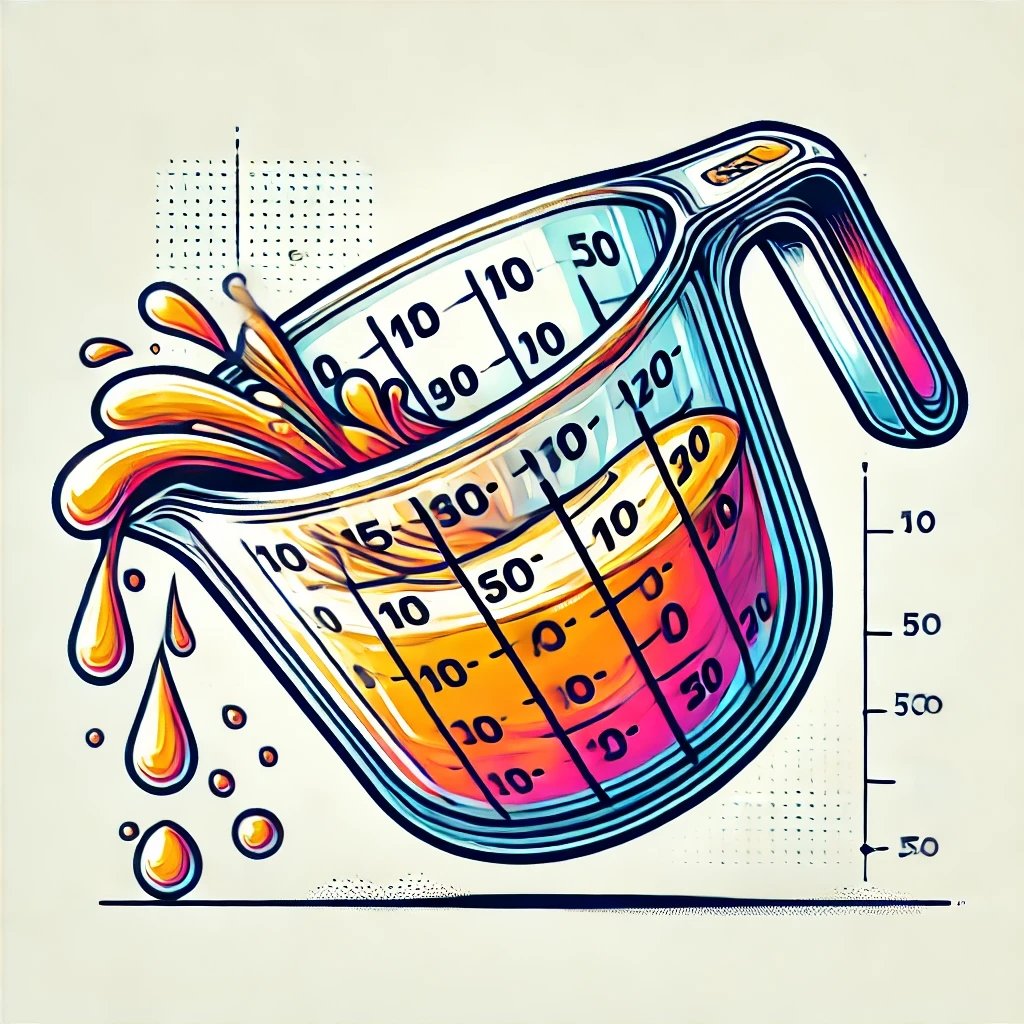Accurate measurements are the unsung heroes of every successful recipe. Whether you’re doubling your grandma’s secret soup recipe or scaling down a batch of cookies, understanding conversions like how many cups in a quart ensures precision and perfection. Let’s explore this essential kitchen topic in detail, breaking down the basics, addressing common questions, and sharing practical tips to make your time in the kitchen stress-free.
What Is a Quart, and Why Does It Matter?
A quart is a standard unit of volume measurement widely used in cooking, especially in the U.S. It represents one-fourth of a gallon or 32 fluid ounces. On the other hand, a cup is a smaller unit, often used to measure individual portions of dry or liquid ingredients.
Understanding the relationship between these units is key to mastering recipes, especially when adjusting serving sizes or following American cookbooks.
The Basic Conversion: How Many Cups in a Quart?
The quick answer: 1 quart equals 4 cups.
Here’s how it breaks down:
- 1 Quart = 2 Pints
- 1 Pint = 2 Cups
- Therefore, 1 Quart = 4 Cups
For those working with ounces, 1 quart is equivalent to 32 fluid ounces, meaning each cup contains 8 fluid ounces.

Practical Uses of Quart-to-Cup Conversions
From cooking to crafting, understanding quart-to-cup conversions proves handy in various scenarios:
- Scaling Recipes: Adjust large recipes for smaller gatherings or vice versa.
- Meal Prep: Measure large quantities of liquids like soups or marinades.
- Baking: Achieve perfect consistency in doughs or batters by measuring accurately. For a detailed example, check out this homemade wafer cookie recipe, which relies heavily on precise ingredient measurements.
Example: If a recipe calls for 2 quarts of stock, that translates to 8 cups. No guesswork is needed!
Common Measurement Hierarchies
| Measurement Unit | Equivalent |
|---|---|
| 1 cup | 8 Fluid Ounces |
| 1 Pint | 2 Cups |
| 1 Quart | 2 Pints or 4 Cups |
| 1 Gallon | 4 Quarts or 16 Cups |

How to Convert Cup to Quarts (and Vice Versa)
To convert cups to quarts, use this simple formula:
- Number of Quarts = Number of Cups ÷ 4
For example:
- 8 cups ÷ 4 = 2 quarts.
To convert quarts to cups, multiply by 4:
- Number of Cups = Number of Quarts × 4
For instance:
- 3 quarts × 4 = 12 cups.
Pro Tip: Use measuring tools like liquid measuring cups with clear markings for the most accurate results.
The Importance of Accurate Measurements
Accurate measurements are crucial, especially in baking, where even slight variations can impact the outcome. Liquid measurements are often the trickiest, so here are some practical tips:
- Use the Right Tools: Always use a liquid measuring cup for liquids and dry measuring cups for dry ingredients.
- Measure at Eye Level: Place the cup on a flat surface and ensure the liquid reaches the correct line at eye level.
- Avoid Overfilling: Level off dry ingredients with a straight edge for precision.
Dry vs. Liquid Measurements: Are They Interchangeable?
No, they are not interchangeable. While both measure volume, their design differs:
- Liquid Measuring Cups: Transparent with spouts to pour liquids without spilling.
- Dry Measuring Cups: Flat-edged for leveling off ingredients like flour or sugar.
Common Mistakes to Avoid
- Confusing Quarts and Liters: 1 quart is approximately 0.946 liters, not 1 liter.
- Forgetting the Difference Between U.S. and Imperial Systems: The imperial quart equals 1.13 liters, larger than the U.S. quart.
- Estimating Measurements: Guesswork can lead to inconsistent results, especially in baking.

Practical Applications of Quart-to-Cup Conversions
Here are real-world scenarios where this conversion is essential:
- Scaling Recipes: Doubling or halving recipes becomes easier with accurate measurements.
- Making Stock or Soup: Large-scale recipes often use quarts as their primary unit.
- Canning and Preserving: Liquid ingredients like brines are often measured in quarts.
Fun Trivia: The History of Quarts
Did you know the word “quart” comes from the Latin word “quartus,” meaning “fourth”? It was historically used to measure one-fourth of a gallon, a practice that dates back centuries.
Tips for Accurate Measuring
- Use the Right Tools: Use liquid measuring cups for liquids and dry cups for dry ingredients.
- Check at Eye Level: When measuring liquids, ensure the cup is on a flat surface, and the liquid is at eye level.
- Avoid Overfilling: Level off dry ingredients with a knife or flat edge for precision.
Common Mistakes and How to Avoid Them
Even seasoned cooks make measurement mistakes. Here’s how to avoid the most common ones:
- Overfilling Measuring: Leads to excess ingredients, ruining recipes. Always level off dry ingredients.
- Mixing Up U.S. and Imperial Measurements: A U.S. quart is smaller than an imperial quart (946 mL vs. 1,136 mL). This difference can be critical when working with recipes that involve unique ingredients, such as those needing a Cotija cheese substitute, where accurate conversions matter.
- Incorrect Liquid Measurements: Always measure liquids in a transparent cup at eye level for accuracy.
FAQs About Quarts
How many cups are in a quart?
- There are 4 cups in 1 quart in the U.S. customary system.
Can I use a liquid measuring cup for dry ingredients?
- It’s not recommended as it can lead to inaccuracies.
How many cups are in 2 quarts?
- 2 quarts = 8 cups.
What’s the difference between a pint and a quart?
- 1 quart equals 2 pints.
Mastering the Quart-to-Cup Conversion
Understanding how many cups are in a quart is a simple yet vital skill for every cook. With 1 quart equaling 4 cups, this conversion helps you tackle recipes confidently, ensuring consistent and delicious results. Combine this knowledge with proper tools, and you’ll be a measurement pro in no time!
Download Your Handy Kitchen Conversion Chart
Understanding kitchen measurement conversions is essential for every cook. To make things even easier, we’ve prepared a handy Kitchen Conversion Chart that you can download and print for quick reference. This chart covers all the essential conversions, from gallons to teaspoons, helping you measure with confidence in any recipe.
